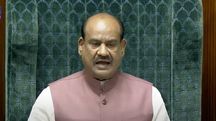NSCN-IM claims Modi government agreed for flag and constitution for Nagas, took U-turn because of RSS
The NSCN-IM blames the Central government for creating confusion among the Naga people by signing two agreements—the Framework Agreement and the Agreed Position. While the Union government signed the FA in the NSCN-IM in 2015, it also signed the Agreed Position with seven Naga National Political Groups (NNPGs) in 2017.
 NSCN-IM claims Modi government flag and constitution for Nagas
NSCN-IM claims Modi government flag and constitution for NagasIn a recent press statement, the Nationalist Socialist Council of Nagalim (NSCN-IM) said that the peace talk between the Union government and the Naga separatist group is not stuck because of its insistence on a separate flag and constitution for Nagaland. The outfit has claimed that Prime Minister Narendra Modi-led Union government had already accepted its demand for a separate flag and constitution in the “Framework of Agreement” (FA) signed between two sides seven years ago.
The NSCN-IM also blamed the Central for creating confusion among Naga people by signing two agreements—the Framework Agreement and the Agreed Position. While the Union government signed the FA in the NSCN-IM in 2015, it also signed the Agreed Position with seven Naga National Political Groups (NNPGs) in 2017.
“These two agreements have divided the Naga people. If the Government of India is genuinely sincere to go for an early solution, why is it pursuing two agreements for one people and one common issue? These two agreements are parallel in nature, one is within the Indian constitution and the other is outside the purview of the Indian constitution. With this unwarranted policy, the Government of India is testing the nerve of the Nagas and delaying the whole process,” read the statement.
But more importantly, the rebel group claims that the FA had acknowledged and accepted the declaration of the Naga Independence Day on August 14, 1947, and the Plebiscite of 1951 and the flag and the constitution are the embodiment of the FA. The details of the FA have not yet been made public by either side.
The statement claims that “sharing of sovereign powers” was mentioned in the FA recognising and accepting Naga sovereignty. “It is not the case of the Indian constitutional provision granting power division. Then, how can one say there is no flag or constitution. Every sovereign nation has its own flag and constitution,” read the statement.
In the statement, the NSCN-IM further said that neither former interlocutor R N Ravi nor current interlocutor AK Mishra had ever said “that there is no flag and constitution in the Framework Agreement.” However, Ravi during his tenure as interlocutor, repeatedly made it clear that there would be no separate flag and constitution despite a persistent demand for these by the NSCN (IM).
Interestingly the Naga militant outfit blames the RSS—the ideological fountainhead of the BJP ruling the Centre—for the alleged U-turn of the Modi government over flag and constitution. It claims that though the “matter was resolved long back”, the RSS questioned the provision for separate flag and constitution and the delay in reaching a “final solution” over the FA started from that opposition. “The manifesto of the RSS/Hindutva sharply contradicted the principal agreement of the FA,” read the statement.
The Naga secessionist struggle can be traced back to August 14, 1947, when Angami Zapu Phizo of the Naga National Council (NNC) first revolted against New Delhi. On November 11, 1975, the NNC signed the Shillong Accord, accepted the Constitution, and agreed to surrender their weapons. In August 1976, Muivah, a former general secretary of NNC, convened a National Assembly where he rejected the accord as the "work of traitors". In 1980, Muivah, along with Isak Chisi Swu and S.S. Khaplang, formed the NSCN. The majority of the rank and file of the NSCN was from the Konyak tribe, while the top leadership came from the Tangkhuls. The NSCN split into two groups in 1988-the Konyaks formed NSCN(K) under the leadership of Khole Konyak and S.S. Khaplang, a Hemie Naga from Myanmar, while NSCN(IM) was led by Isak Chisi Swu, a Sema from Nagaland, and Muivah, a Tangkhul from Manipur. There have been several other splits of the NSCN.
The NSCN(IM) signed a ceasefire treaty with the Central government in 1997 and since then 80 rounds of talks have been held between the government and the insurgent group. The NSCN(K) also declared a ceasefire in 2001 but unilaterally broke the agreement in 2015.
Multiple factions of NSCN (K) and some older outfits got together in 2016 to form the NNPGs, which signed the Agreed Position with the Centre in 2017. The NNPGs have not demanded a separate Naga flag and constitution.
Copyright©2025 Living Media India Limited. For reprint rights: Syndications Today









